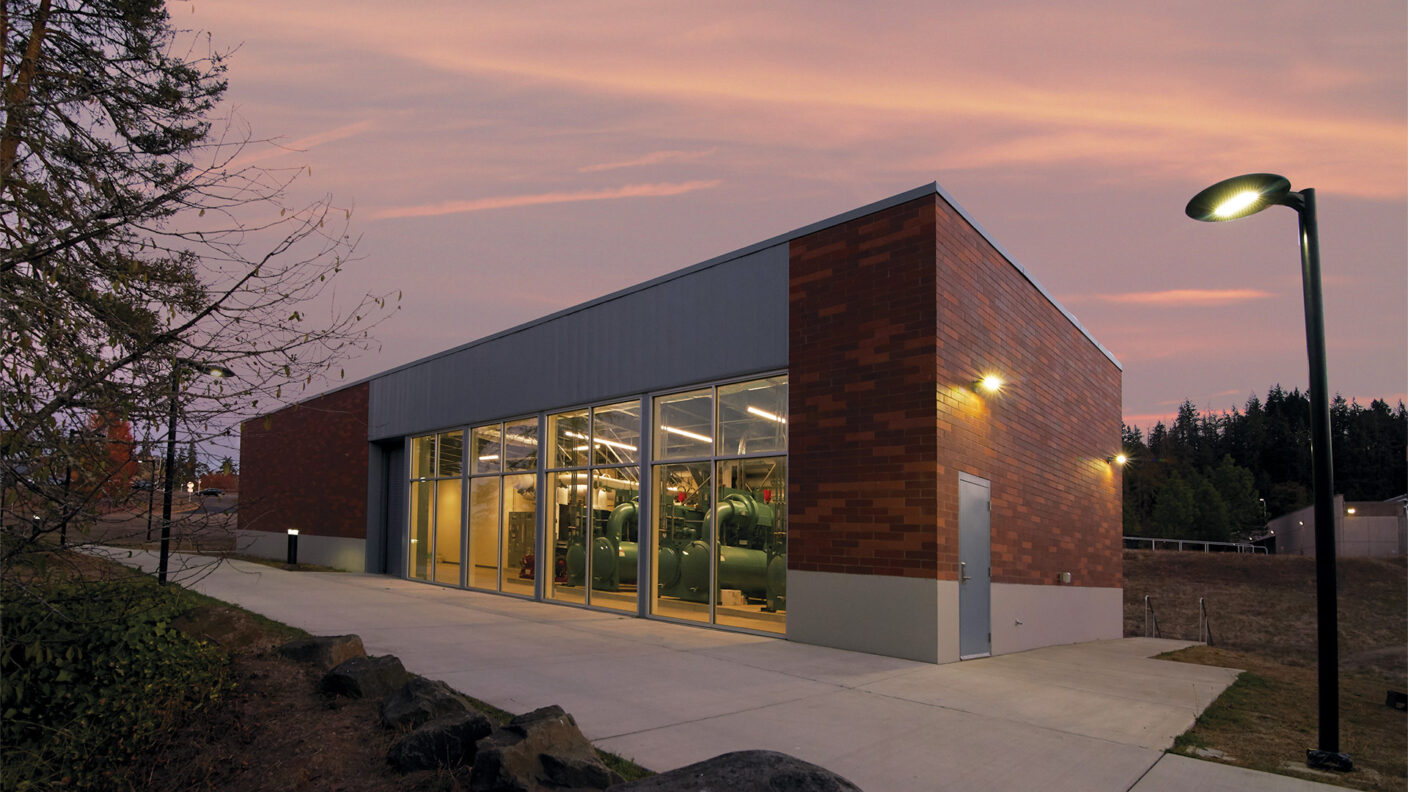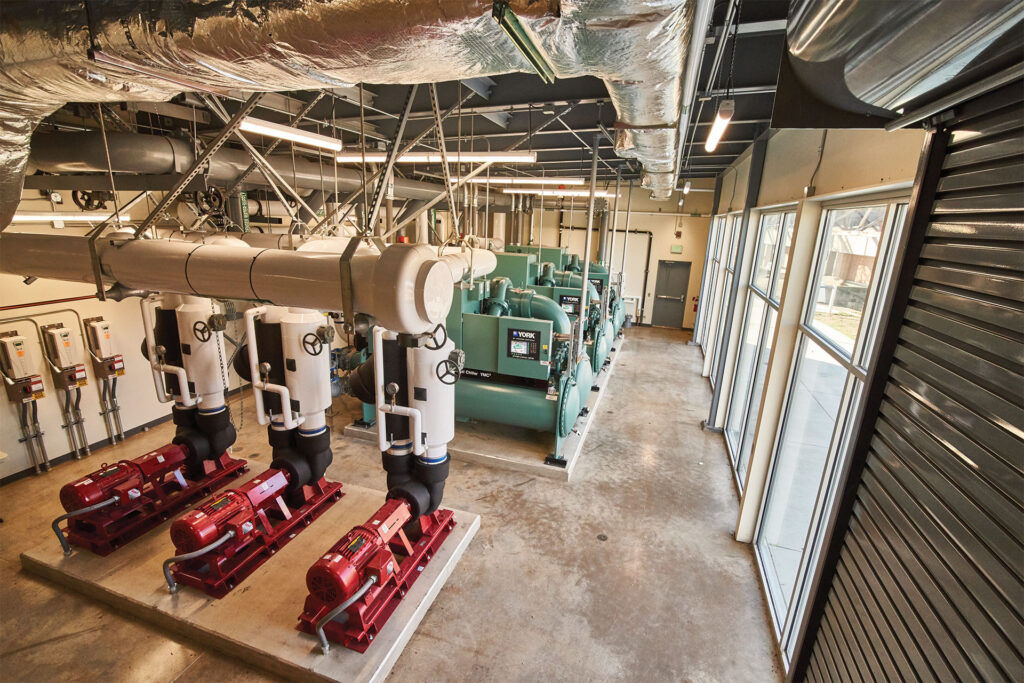
- Campus remained fully operational
- Upgrades affected nearly every building on campus
- Anticipated budget was met
Lane Community College Central Plant Upgrade
Continuity with Community
Systems West provided an initial feasibility study for the Lane Community College central plant upgrades. After the study, we were selected to provide sustainable mechanical and electrical designs to meet LEED Silver equivalency. Our relationship with Lane Community College dates back to a major plant renovation in 1994. This original plant project involved an upgrade of their central plant by replacing two electric boilers with two, one-megawatt heat recovery chillers, some of the largest in use at the time. In 2002, we were asked to add another boiler, and we’ve since established an exceptional resume of central plant work at LCC.

Intricate Systems
In 2010, our partners at LCC asked us to conduct a master plan consisting of a major renovation of the central plant. They have a unique distribution system and sought our expertise to meet the needs of a growing campus. The upgrades affected nearly every building on campus and made project forecasting particularly critical. We phased the work to keep the campus fully operational.
SWE worked alongside Rowell Brokaw Architects to build a new high efficiency chiller plant south of the existing site and integrate it into the campus distribution system; designing a new heating water plant as well as a high-efficiency natural condensing system. The new buildings required significant planning and engineering, including upgrading the new piping and specifying design parameters for future facilities. Our energy modeling and economic analysis formed the basis for those upgrades and influenced the development of scope and budgets for the future bond.
Expanding Our Knowledge
For this project, we created a unique, proprietary software for master planning and energy analysis. With functionality as the driving objective, we performed a financial analysis, an assessment of options for optimum cash flow, and established basic economic metrics. We landed on a one-pipe system which balances flows and temperature changes and helps circulation.
Early in the project, we considered ground source heat pumps and using the ground as a closed loop well field. After looking at some 400 wells, it was clear the site wasn’t suitable for the required scale. Though we ultimately pivoted to a more appropriate solution, our team was excited to dig into new topics — ask us sometime about what we now know about well fields and their seasonal functionality!

Want to be a part of projects like this? Join Our Team.
